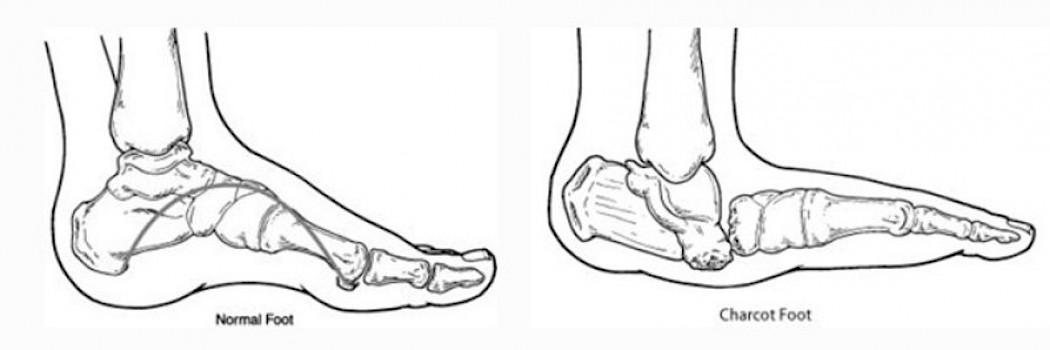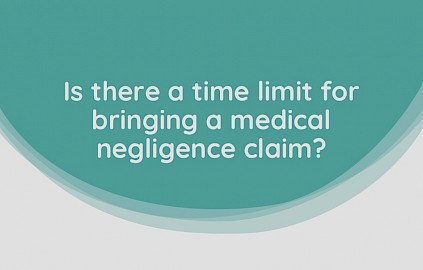Minor injuries to the feet can lead to Charcot’s foot, a distressing condition. It is critical GPs and others seeing injuries in certain diabetic patients are careful to urgently refer them for treatment.
How do medical negligence compensation claims arise from Charcot’s foot?
Charcot’s foot medical negligence claims may arise from:
- A failure to recognise signs and symptoms of Charcot’s foot. This may be a GP assuming a diabetic patient has a simple sprain, not needing follow-up.
- A delay in diagnosis of Charcot’s foot symptoms.
- A delay in treating Charcot’s foot symptoms.
- A failure to follow-up and monitor progression of Charcot’s foot.
- A failure to arrange for appropriate foot care under a podiatrist.
- A delay in treating foot ulcers and infections.
- Inappropriate treatment for foot ulcers, infection and Charcot’s foot symptoms.
- In Charcot’s foot cases where surgery is needed, failure to use the correct operative technique or negligent post-operative care.
Do I have a claim for Charcot’s foot?
If you have experienced negligent delay in diagnosis, or negligent delay in treatment of Charcot’s foot, you may be entitled to claim compensation. Also, you could have a compensation claim for Charcot’s foot if your treatment has been of a poor standard and you have not recovered as you expected.
What compensation can I claim for Charcot’s foot?
Charcot’s foot medical negligence can have significant impact on a patient’s life. It can lead to a physical disability, which can have a subsequent impact on mental health, financial stability, self-esteem and more. And, in severe cases, negligent care of Charcot’s foot can lead to amputation.
Here is what you may be able to claim in compensation:
- pain and suffering
- physical disability
- time off work, and subsequent loss of earnings or pensions
- adapting your home
- support and rehabilitation
- physical and/or occupational therapy
- counselling
- prosthetic limbs
- specialist equipment
How much will it cost to make a Charcot’s foot negligence claim?
At Medical Solicitors, we start by offering a free, no obligation chat to learn more about your potential Charcot’s foot negligence claim. Once we understand the foundations of your case, we investigate your claim and advise you on the next steps. If we feel that you have a medical negligence case, we offer a No Win No Fee agreement. Simply put, this means you won’t pay us a penny for your Charcot’s foot medical claim unless your case is won.
Why choose Medical Solicitors for your Charcot’s foot claim?
We are extremely transparent with our complete process - we don’t believe it’s fair to ask you to sign an agreement or contract before you’re happy with our performance. We have decades of experience handling medical negligence claims, and wholly understand the physical and mental challenges a traumatic experience can cause. Our team will listen to your story, build up your case, and are more than happy to visit you in your own home if this is most comfortable for you. To discuss your Charcot’s foot claim with us, please get in touch.
Who is at risk of Charcot’s foot and resulting disability?
Diabetic patients are most at risk of developing Charcot’s foot. Typically, there is a foot injury in a neuropathy affected diabetic patient, such as a sprain. Diabetic patients affected by neuropathy (i.e. nerve damage) often do not have normal sensation in their feet. Sometimes, they may suffer simply a sprain. However, at other times, the injury may be more than a sprain, such as a broken bone in their feet, but this will not be felt by the patient and appreciated to be a significant injury.
Due to the nerve damage, the patient cannot feel the injury. Whether it is a simple sprain, or an actual fracture, either can lead to Charcot’s foot in a diabetic neuropathy patient.
After a foot injury, bones become weak leading to fracture and deformity, and the bones in the foot then remodel themselves. This leads to an increased risk of ulceration. Ulcers in diabetic patients can be difficult to manage and it is crucial ulcers are detected and cared for quickly. However, a peripheral neuropathy patient may not notice an ulcer. Untreated ulcers can lead to deep pressure sores, sepsis, and even eventually the need to amputate part of the foot.
What are the symptoms of Charcot’s foot?
Presentation is usually a swollen foot, but other symptoms may include:
- redness of the foot
- the foot feels warm to touch
- the foot may appear to have changed in shape
If you are diabetic and notice any of these signs and symptoms you must stop putting weight on the foot and see your GP (or go to your local Emergency Department) urgently.
A patient might think they have just sprained their foot. The injury triggers the Charcot process in a diabetic patient. If the patient continues to walk on the foot, bones will crack and sublux (i.e. dislocate).
The patient ends up with a classic “rocker bottom” foot as pictured below.

An illustration of the classic 'rocker' foot a patient is left with after inadequately treated Charcot's foot.
What is the treatment for Charcot’s foot?
Non-surgical treatment for Charcot’s foot
Any new swelling of the foot should be assumed to be Charcot until it has been proven otherwise. Antibiotics are prescribed and the foot must be protected to immobilise it. This is either a plaster cast or an air foot walker. This is a three- to 15-month process to preserve the foot arch. It is critical that the patient doesn’t put weight on the foot until it has fully healed.
Surgical treatment for Charcot’s foot
If non-surgical treatment isn’t available to you, or doesn’t work, it may be possible to operate. It can be possible, in some patients, to do an operation to reshape the foot so that they can start to put weight on it again, over time. This type of surgery involves moving the bones and joints in a foot back to their original place. However, if this doesn’t work, amputation may be the next step.
What is the prognosis for Charcot’s foot?
Sadly, the diagnosis is often missed.
If the deformity is severe, surgery may be needed to prevent the loss of a toe, foot or life. If referred at over eight months from injury, 70 percent of people end up with complications.
However, if referred within four months, the risks reduce to less than 15 percent. This is why a delay referring a diabetic patient with a foot injury can commonly lead to medical negligence claims.
How can you prevent Charcot’s foot?
Patients with diabetes can help themselves prevent Charcot’s foot and its complications by:
- Keeping blood sugar levels under control to help reduce the progression of nerve damage in the feet.
- Having regular check-ups from a podiatrist or physician.
- Checking both feet themselves every day and seeking medical advice immediately if they notice signs of Charcot’s foot. Patients who are visually impaired should have somebody else check their feet for them.
- Being careful to avoid injury, such as bumping the foot.
- Improving their life-style, getting regular exercise (being careful with their feet!), not smoking, limiting or not drinking alcohol and following a healthy diet.
Contact Medical Solicitors to discuss your claim
If you believe your diabetes been mismanaged and you have a Charcot’s foot claim, please get in touch with our specialist team. We’re here to listen to your story and offer legal advice. To reach us, give us a call on 01142 507100, email help@medical-solicitors.com or use our online enquiry form.








